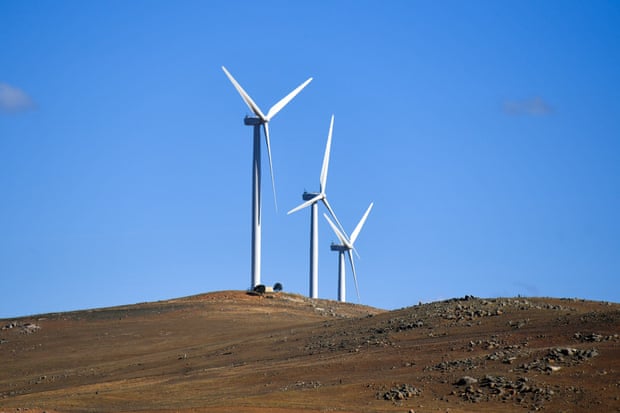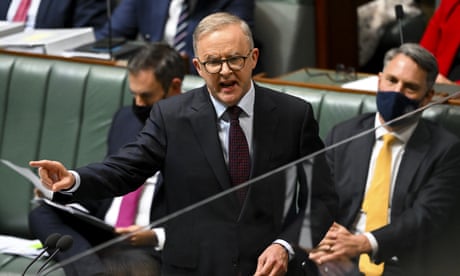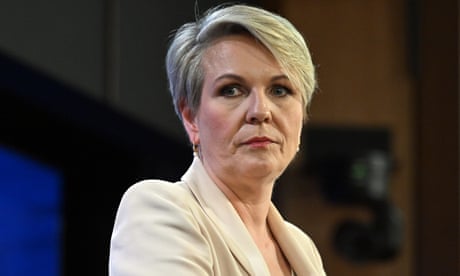Extract from The Guardian
Here’s what we know the new bill means for climate action and what happens once we have legislated targets.

Fri 5 Aug 2022 03.30 AEST
Last modified on Fri 5 Aug 2022 03.31 AESTHere’s what we know about what the bill means for climate action, and what happens once the country has legislated emissions targets.
What does the climate bill do?
The climate bill enshrines into law two national greenhouse gas emissions targets: a 43% cut below 2005 levels by 2030, and a reduction to “net zero” by 2050.
The bill emphasises that the 2030 target is a floor not a ceiling, which means it is the minimum cut that can happen but there is nothing to legally prevent deeper cuts. The legislation requires several government agencies to consider the targets – that is, factor in climate change – when making investment decisions.

The legislation beefs up the role played by the Climate Change Authority, a decade-old agency responsible for giving policy advice. The authority was cut back and largely ignored under the Coalition after it failed to abolish it. It will now be expected to give annual advice on progress towards meeting Australia’s climate targets and to advise later this parliamentary term on a new target for 2035. The government will have to release the advice and publicly explain why if it doesn’t follow it.
The bill requires the climate change minister, currently Chris Bowen, to give an annual statement to parliament on progress towards the targets. Bowen has likened it to the annual Closing the Gap statement.
What doesn’t the climate bill do?
It doesn’t include a mechanism or funding to cut emissions from electricity, industry, transport, agriculture or other parts of the economy.
What happens now?
The bill has to clear the Senate when parliament next sits in September, but that’s now a formality. Before then, a Senate committee will hold an inquiry. The Greens want it to address whether new coal and gas developments are consistent with Australia’s climate commitments. There is no shortage of evidence and rhetoric – from climate scientists, the United Nations secretary general and the International Energy Agency, among others – to say they aren’t.
How will we meet the 43% target?
Labor’s climate plan, called Powering Australia, includes two main policies plus a few add-ons. Bowen commissioned modelling from the consultants RepuTex to estimate what cut in emissions the policies could deliver. RepuTex tallied them up and suggested the 43% target.
But the details of the policies are still to be fleshed out. The first is to use the safeguard mechanism, which was introduced by the Abbott government to stop increases in pollution from major industrial sites, including fossil fuel mines.
It has failed to achieve this – polluters have routinely been allowed to just increase emissions. Labor says it will work with companies to reduce their emissions baselines (think: limits) “predictably and gradually over time”, while “supporting international competitiveness and economic growth”.
No detail has been released – Bowen has flagged there will be a discussion paper later this month – but RepuTex suggested improvements to the safeguard would reduce annual emissions by 24m tonnes by 2030.
There are big questions to be answered before then. How will baselines be set? What will be the relative responsibility of different industries and facilities to make cuts? What steps will be taken to ensure the cuts are real (given facilities largely report their own emissions)?
Will there be limits on the number of carbon credits that businesses can buy to claim as their own cuts so they have to actually cut emissions onsite (given, as the truism goes, you can’t just offset your way to zero)? There is a proposal to grant companies that cut emissions more than they have to – so, below their limit – credits they can sell, creating a carbon trading scheme. How will that work?
And – crucially – how will new fossil fuel developments that would increase total industrial emissions be treated?
As they say in the classics, it’s complicated.
The second major policy is called Rewiring the nation. It’s a promise to spend $20bn accelerating new electricity transmission links – in oversimplified terms, poles and wires – between different regions and from new renewable energy zones to cities.
Labor says this will lead to 82% of electricity on the east coast being from renewable sources by 2030, up from about 33%. RepuTex says this should help reduce annual emissions from electricity by 37m tonnes compared with today.
Another 33m tonnes of annual emissions cuts are promised from a new national reconstruction fund. The government says up to $3bn of spending from the fund will “support renewables manufacturing and the deployment of low-emissions technologies”. And there is some support for electric vehicles, but it is not a full transport climate policy, and RepuTex expects it will cut annual emissions by just 4m tonnes by the end of the decade.
Are these ambitious policies?
Not really. Negotiating the changes to the safeguard mechanism is likely to be challenging, and they will be consequential if well designed, but the emissions cuts expected from Labor’s policies are modest.
Official government projections found even under the Coalition’s policies – which did little to cut emissions and funnelled billions of dollars into fossil fuel industries – emissions in 2030 would be at least 30% below 2005 levels.
Analysts have found the official projections did not fully reflect all state government targets, and that we might be on track for a cut in the mid-30s before the Albanese government does anything.
They have also said it would be possible to make deeper cuts that reflect what Australia should be doing to play its part in addressing the climate crisis and living up to the Paris agreement – a more than 50% cut by 2030 – while setting up, rather than damaging, the economy.
How will the net zero target be met?
The policies outlined above would help get there, but Labor has not released a full net zero plan.
What about the future of coal and gas?
It will play out in negotiations over the design of the safeguard mechanism, and in a promised revamp of national environment laws by the environment minister, Tanya Plibersek, next year.
The Greens and others want a “climate trigger” inserted in the Environment Protection and Biodiversity Conservation (EPBC) Act, which would allow new development proposals to be refused on emissions grounds.
Logic says there should be one. The government hasn’t supported one, but neither has it ruled it out.
This argument has a long way to run.

No comments:
Post a Comment